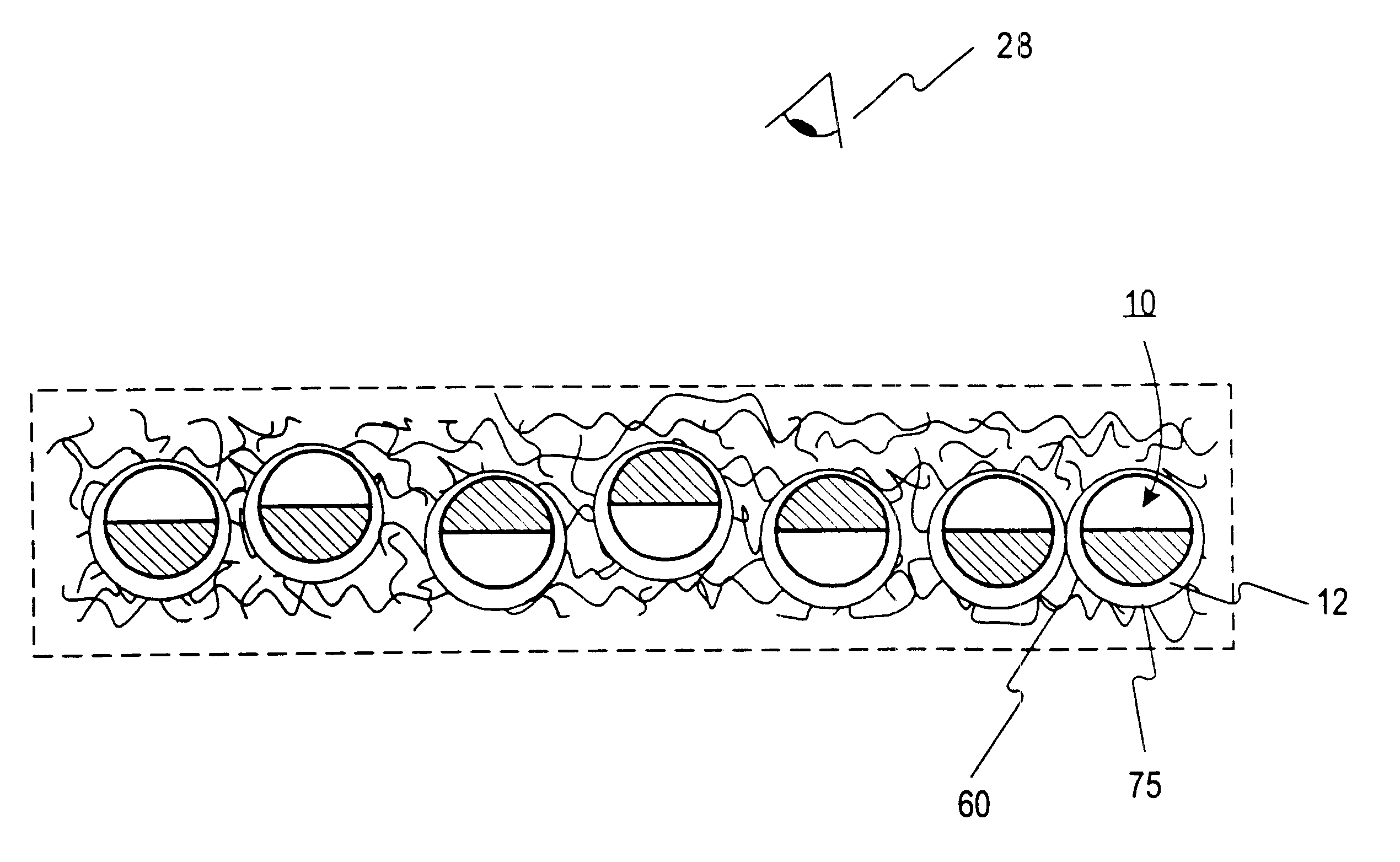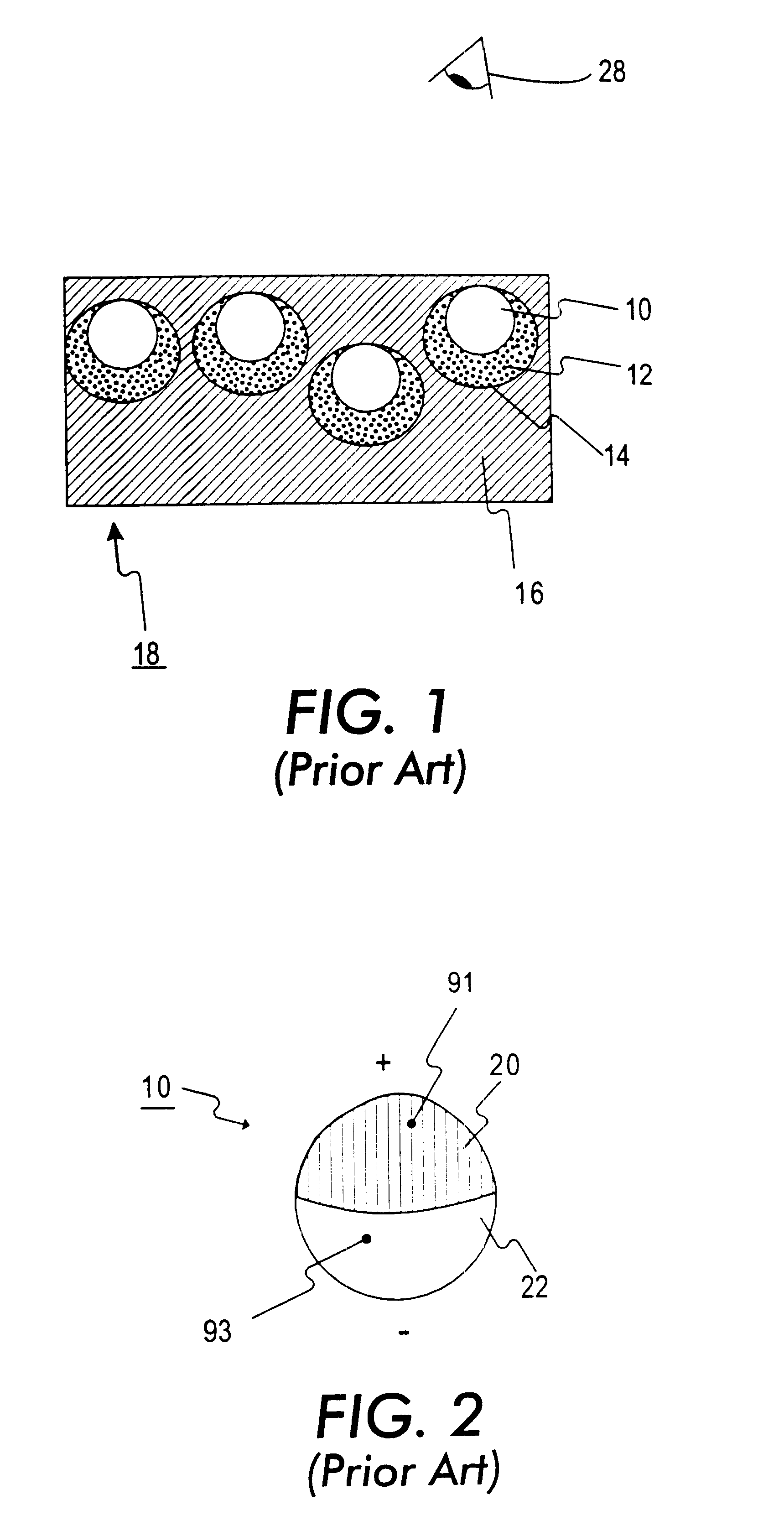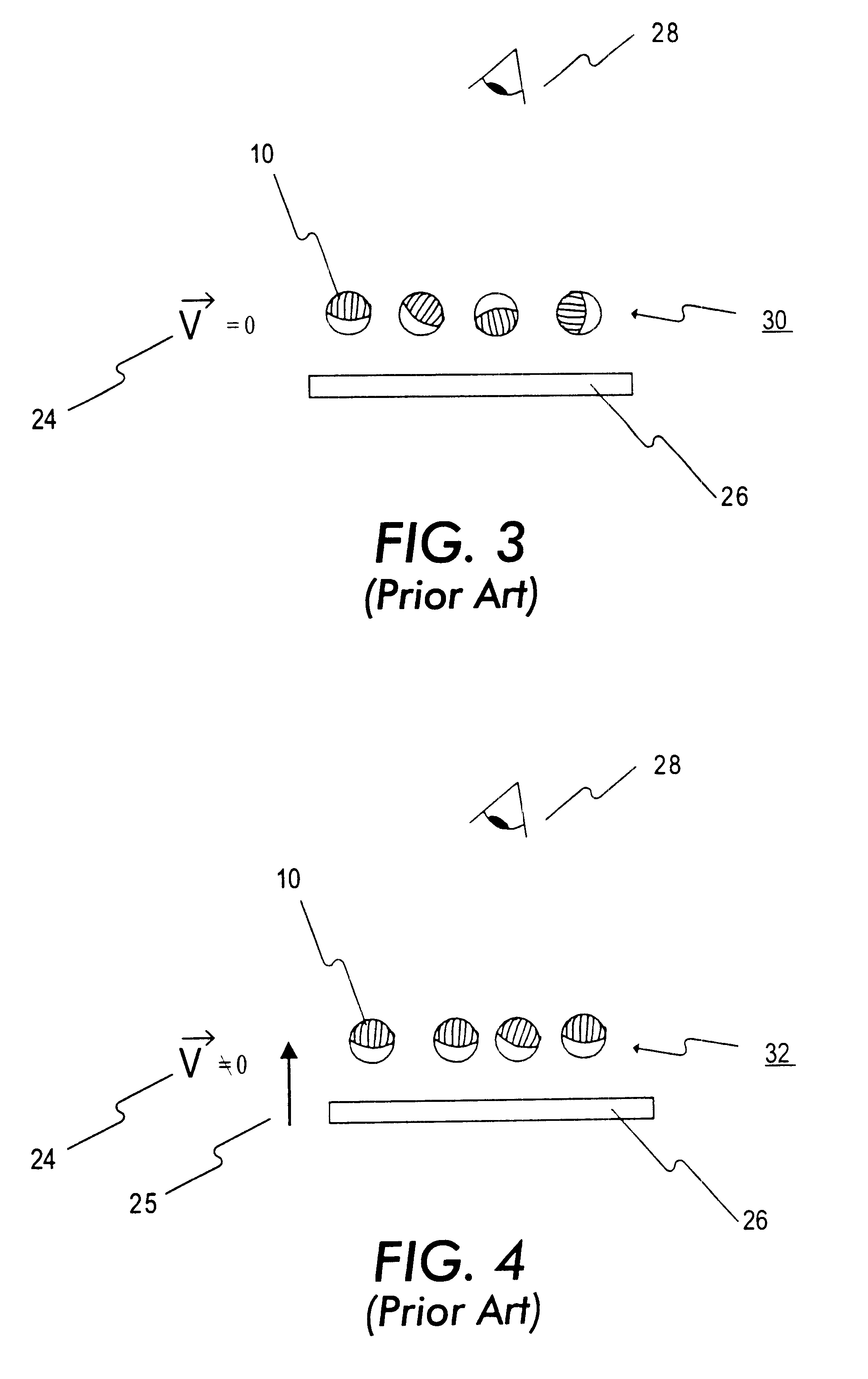Rotating element sheet material with generalized containment structure
a technology of rotating element and containment structure, which is applied in the direction of electric/magnetic/electromagnetic heating, identification means, instruments, etc., can solve the problems of lack of uniform thickness, cost of substrate is the primary impediment, and the most expensive component of rotating element sheet material
- Summary
- Abstract
- Description
- Claims
- Application Information
AI Technical Summary
Benefits of technology
Problems solved by technology
Method used
Image
Examples
first embodiment
the present invention is depicted in FIG. 8 where fibrous matrix 60 is a plurality of paper fibers. In FIG. 8, fibrous matrix 60 makes contact with and supports rotatable elements 10. Also contained within fibrous matrix 60 is enabling fluid 12. The dotted line indicates the boundary of fibrous matrix 60 and enabling fluid 12, where, for example, some restraining means (not shown) keeps enabling fluid 12 within fibrous matrix 60 and around rotatable elements 10. Fibrous matrix 60 restricts the translational motion of rotatable elements 10. Translational motion of rotational elements 10 can occur as a result of any applied or stray vector field that may be present. An example of a stray vector field that is present is the field associated with the gravitational force. In a large-area-display application, the force associated with the gravitational force will appreciably affect the appearance of the display. An example of an applied vector field is the field that is responsible for ad...
second embodiment
the present invention is depicted in FIG. 11. FIG. 11 depicts fibrous matrix 60, micro-capsules 75, rotatable elements 10, and enabling fluid 12. Although FIG. 11 depicts micro-capsules 75 that are spherical in shape and that contain only one rotatable element per micro-capsule, one skilled in the art will appreciate that micro-capsules 75 may be any convenient shape or structure, and may contain more than one rotatable element 10.
Micro-capsules 75 are made from material such as gelatin and are hollow within in order to accommodate rotatable elements 10 and enabling fluid 12. The work function associated with the rotational motion of rotatable elements 10 within micro-capsules 75 is a function of the properties of micro-capsules 75, enabling fluid 12, and rotatable elements 10. The work function in this embodiment of the present invention will not be a function of the properties of fibrous matrix 60. This can be advantageous when the material ideally suited to function as fibrous ma...
PUM
| Property | Measurement | Unit |
|---|---|---|
| Polarity | aaaaa | aaaaa |
| Transparency | aaaaa | aaaaa |
| Birefringence | aaaaa | aaaaa |
Abstract
Description
Claims
Application Information
 Login to View More
Login to View More - R&D
- Intellectual Property
- Life Sciences
- Materials
- Tech Scout
- Unparalleled Data Quality
- Higher Quality Content
- 60% Fewer Hallucinations
Browse by: Latest US Patents, China's latest patents, Technical Efficacy Thesaurus, Application Domain, Technology Topic, Popular Technical Reports.
© 2025 PatSnap. All rights reserved.Legal|Privacy policy|Modern Slavery Act Transparency Statement|Sitemap|About US| Contact US: help@patsnap.com



